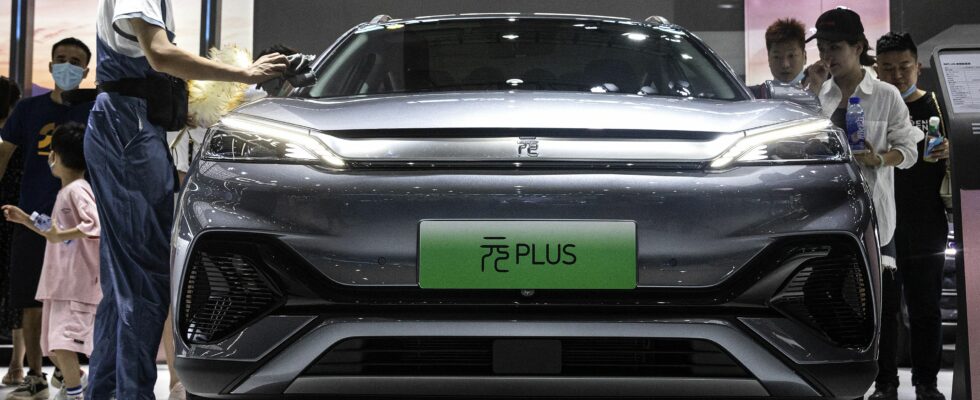In the spans of the Shanghai Motor Show last month, the stands of Chinese brands overshadowed German stars, until now the darlings of well-to-do Chinese. “Before, I drove an Audi, testifies a visitor. Now, I can have a BYD for half the price, with the same characteristics. In addition, I make work for the local industry!”
This year, the BYD brand overtook Tesla in the electric vehicle segment and now holds 35% global market share. But she’s not the only one. Behind BYD, groups like Nio, Xpeng, Li, Polestar, MG or Lynk & Co have become household names both in China and abroad. In less than fifteen years, nearly 120 Chinese brands have been born in this niche.
“China is the world’s largest market for electric vehicles, explains Li Xiang, founder of Li Auto. This success has been possible thanks to several factors – technological innovation, government support and growing consumer acceptance”.
1,000 charging stations in every major city
In China, the history of the electric car dates back to 2008, when the government launched a pilot project in five cities. “At first, electric cars were a curiosity, recalls a Beijing taxi driver, one of the first to adopt this technology. Today, most of my colleagues drive electric. It’s cleaner, cheaper and the cars require less maintenance.” “These groups have succeeded in creating affordable and high-quality vehicles, explains Wang Liusheng, an analyst at Chasing Securities. They have invested heavily in research and development, which has allowed them to stay at the cutting edge of technology. Meanwhile, the Chinese government has created an environment conducive to growth.” From 2009 to 2022, the Chinese government has paid nearly 30 billion euros to the sector in the form of subsidies and tax breaks.
In addition, since 2009, the purchase of thermal cars has been gradually banned in most major cities. In Beijing or Shanghai, only clean vehicles are eligible for a license plate. By 2030, the whole country could be fully electric. “China is already the world leader in electric vehicles, launches Miao Wei, former Minister of Industry and Information Technology. Within two years, we will now build at least 1,000 charging stations in each big city.”
Building on their success in the domestic market, Chinese manufacturers are looking far ahead. “There is great potential in emerging markets like India, Southeast Asia and South America,” said William Li, founder of Nio. More than 1 million Chinese electric cars have been exported since the beginning of the year (a 58% increase compared to last year), making the country the world’s leading exporter, ahead of Japan.
The challenge of lithium addiction
First destination? Russia, sanctions oblige (140,000 vehicles sold, three times more than in 2022). In France too, the brands of the Middle Empire have tripled their sales, selling nearly 17,000 vehicles last year. Thus, the MG4 is in the top 5 best-selling electric cars in France. “For the time being, none of these brands is profitable, with the exception of BYD, notes Wang Liusheng. But most of these manufacturers are backed by large groups such as SAIC or Geely. For them, the national market remains a tremendous springboard. If Europe converts to electricity, as planned, in 2035, they will be in a strong position with already fifteen years of experience.”
One of the main challenges, however, remains the dependence on lithium, the raw material for batteries. “Demand is on the rise, which could lead to supply problems,” warns the analyst.
Back to the Shanghai show. Next to the BYD stand, that of Baidu, the Chinese Internet search engine, boasts of the perfect compatibility of electronic systems. “The GPS is from Baidu, the battery is made in China and comes from lithium mines operated by China, the car is entirely designed here, who can say the same? throws us a salesman, bravado. BYD does not sell cars only for a decade, while Peugeot has been manufacturing them for a hundred and twenty years. But how many Peugeots do you see on the streets of Shanghai?
